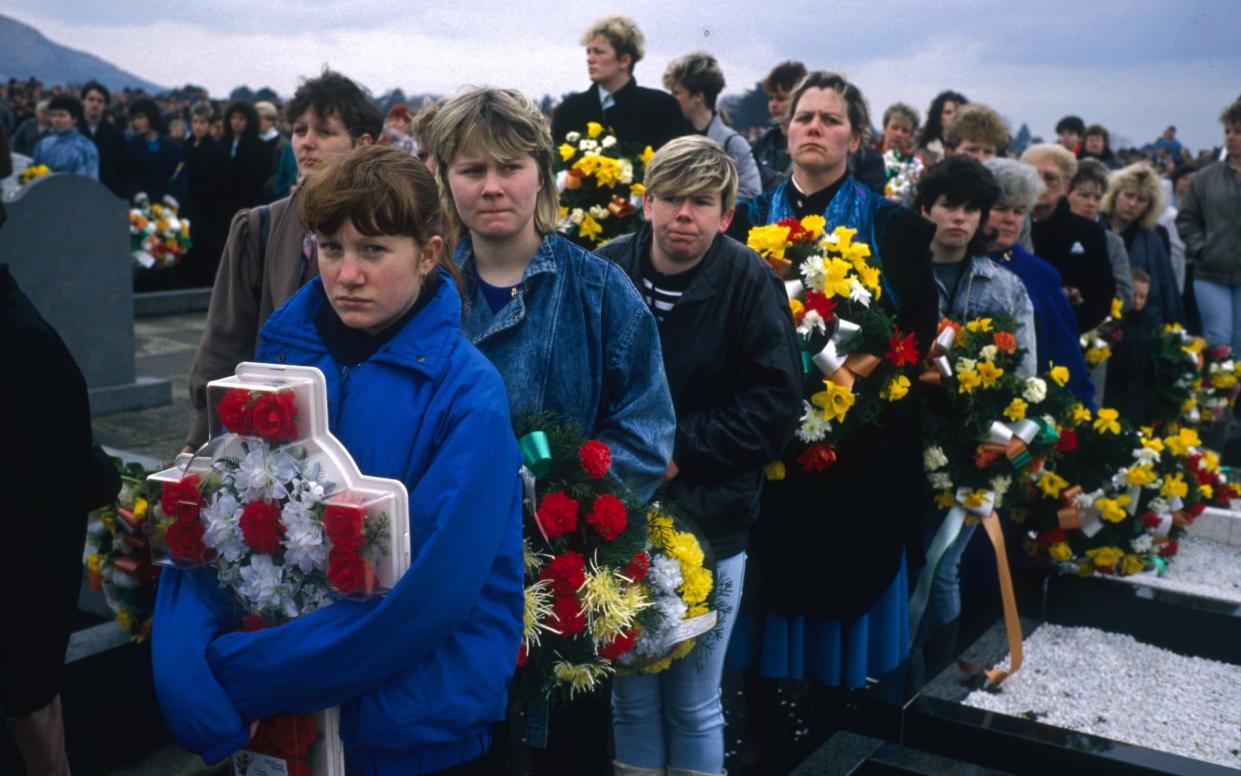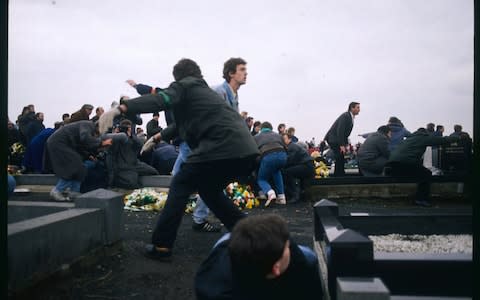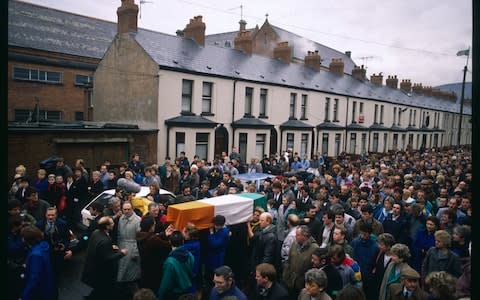The Funeral Murders: unpicking one of the darkest chapters in the Northern Ireland conflict

On the afternoon of March 6, 1988, the SAS shot dead one woman and two men in Gibraltar. Mairead Farrell, Sean Savage and Daniel McCann were members of the IRA and were planning to bomb a parade of the Royal Anglian Regiment in the centre of the peninsula two days later. When they were killed, the three were on foot and unarmed, but on March 8, Farrell’s hire car was found in Marbella, Spain, containing 132 pounds of explosives.
The killings marked the start of a two-week period of violence that proved to be one of the darkest chapters in the history of the conflict in Northern Ireland. It’s these few days in the 30-year conflict that form the focus of my new BBC documentary, The Funeral Murders, which attempts, three decades on, to unpick the details of a deadly series of events that shook the country.
The republican community in the province was appalled by the manner of the Gibraltar deaths. Sean Murray, a cousin of McCann, described the shootings as an “execution”.
But as with so many events in the course of the conflict, opinion was polarised. Noel, a former member of the Royal Ulster Constabulary, says in the documentary: “I had no sympathy for them whatsoever. They were going out there to commit mass murder and they died.”
Eight days after the shootings, the bodies of the three killed in Gibraltar were repatriated and their funeral services were held on March 16 in west Belfast. They were to be buried in Milltown Cemetery nearby. But the day was to end in carnage.

As the third coffin was lowered into the ground, shots rang out in the cemetery and a grenade was hurled towards the crowd. Some of the mourners chased the attacker, a loyalist paramilitary called Michael Stone, and overpowered him before police arrived.
Sixty people were injured in the attack and three of those who chased Stone were killed. Only one of the dead, Kevin Brady, was a member of the IRA. The other two victims - Thomas McERlean, 20, and John Murray, 26 - were married men with two children each and had no political involvement.
None of the relatives of the dead who appear in the film have ever spoken publicly before. Murray’s siblings say they have lived for three decades with the stigma of their brother dying at an IRA funeral. His brother Peter was choked with emotion when he recalled seeing John’s body: “My mummy was there...and she said ‘‘be brave, Peter,’ and I just held John and I held my mummy.”
McErlean’s wife Anna was just 19 years old and pregnant with their third child when her husband was killed by Stone. Three decades later, she still has the clothes he was wearing that day. “I can still smell him on them. It’s a bit of comfort,” she says in the film.
Three days later, as Brady’s funeral procession made its way down the Andersonstown Road in Belfast, an unmarked car drove towards it and was attacked by mourners. Inside the vehicle were two British soldiers, Corporal Derek Wood and Corporal David Howes, both dressed in plain clothes. Mistaken for members of the SAS, they were pulled from the vehicle, disarmed and beaten, then killed.

Even now, images of the attack remain seared on the brain of anyone who’s seen them. Despite this, the violence in Northern Ireland became so commonplace during the conflict there was a sense that those on the mainland had become inured to it. For others who did not grow up steeped in the history of the conflict, it is not always apparent how raw it still is for those who lived through it.
When I went to Belfast to make the film, I was struck to find how short a time 30 years is to those who were caught up in it all. I had thought, perhaps naively, that a lot of water would have flowed under the bridge by now. It soon became apparent this was not the case.
There remains, too, a stark conflict between the versions of the stories people tell there - what is referred to in the documentary as “the battle of the narratives”.
It was this that made me realise there was a new film that could be made about this, which hadn’t been made before. It’s so hard to gain the trust of the many sides to talk about these events, because everyone fears their story won’t be heard or told correctly. I hope those I spoke to will feel I have given their stories the weight they deserve because that’s what they’ve trusted me to do.
It was a huge responsibility, and I was coming to it as an outsider, so there’s a steep learning curve where you develop an awareness of words that are partisan and learn to tread carefully here. But it’s not just the language we use that’s so important: anything and everything can be sensitive and everything remains highly charged.

All those I spoke to in Northern Ireland saw events through a different prism. This has long been the case there, but at a time when views are so starkly polarised elsewhere - whether in Britain, where we’re divided over Brexit or in Donald Trump’s America - this clash of competing narratives in Northern Ireland seems emblematic of what is happening in society at large.
Although the Good Friday Agreement in 1998 began a slow healing process, it seems to me the province remains a traumatised place where memories of the conflict lie close to the surface. In the film, the testimony given by those affected by the events is still raw and it feels like their wounds are quite fresh.
I spoke to many soldiers during my research and they have never got over it. Almost every one of them was on the phone to me in tears. These servicemen had either known the corporals personally or were on duty that day, and the sense that it could have been any of them haunts them to this day.
But perhaps the open wounds are not surprising: achieving closure or processing these events is not easy when so many unanswered questions remained: did anyone tip off Stone that police would operate a stand-off approach on the day of the triple funeral? Why was there a white van parked on the motorway that day and was it part of Stone’s getaway plan?
What were the corporals doing on Andersonstown Road at the time of Brady’s funeral? These are just three of the unresolved issues that still trouble people today. Even now, we don’t fully know what happened that fortnight and why, so it’s no wonder some people are still a little paranoid.
Of course, huge progress has been made. Those on both sides of the sectarian divide now work and socialise together in a way that would have seemed unimaginable not so long ago.
And many people I spoke to were optimistic, full of hope that the next generation would be rid of the scars of the past. But trauma doesn’t disappear in one generation; t things don’t just pass out of the collective bloodstream in the space of a generation alone.
So for many, the history of Northern Ireland lives on in its present. Any peace is fragile, and for those only dimly aware of the history, it is crucial we understand how dark were those days, and how dreadful it would be a return to them.
As told to Rosa Silverman
The Funeral Murders is on BBC Two at 9pm on Monday


